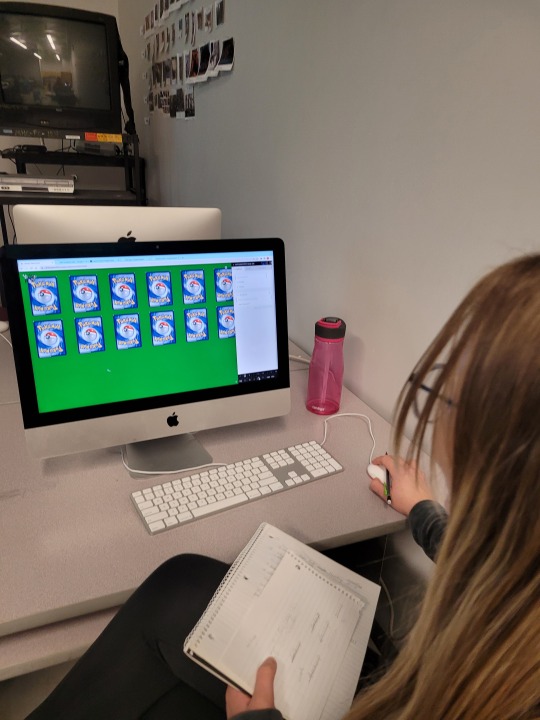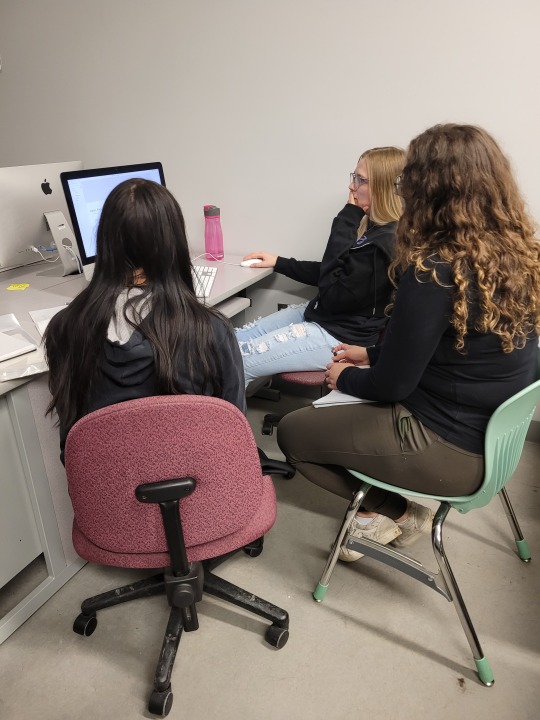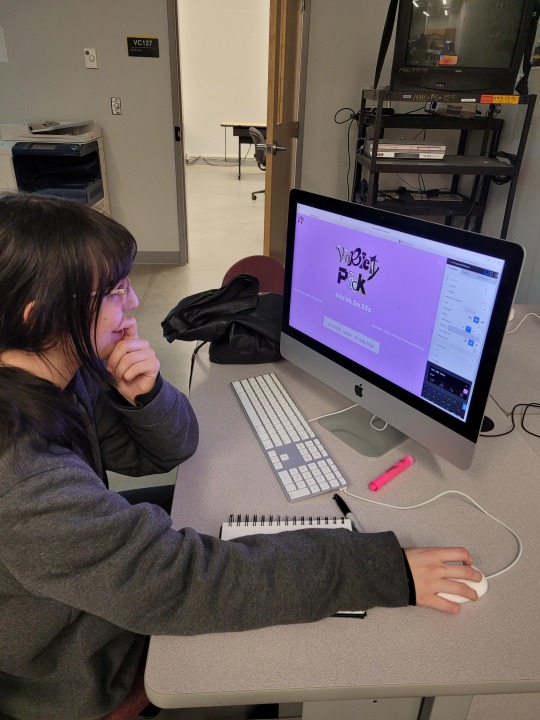#Bubble.io guide
Explore tagged Tumblr posts
Text
How to Create a SaaS MVP Using Bubble.io
Building a SaaS MVP (Minimum Viable Product) used to mean months of coding and tens of thousands in startup capital. Not anymore. With Bubble.iohttp://Bubble.io, a powerful no-code platform, you can build and launch your SaaS MVP in record time — even if you don’t know how to write a single line of code. In this guide, we’ll walk you step-by-step through creating a SaaS MVP using Bubble.io.…
0 notes
Text
How to Hire the Best Bubble.io Developer for you Business
Looking to hire a Bubble.io developer? Ensuring you find the right professional can be the difference between project success and failure. This guide covers key qualifications to seek, questions to ask during interviews, and strategies for choosing a developer who aligns with your project goals. With Bubble.io’s no-code framework, a skilled developer can rapidly design and deploy your web app while maintaining top-quality performance and user experience. Learn essential tips to make hiring a seamless process that delivers the outcomes you need.
1 note
·
View note
Text
Building an eCommerce Web App with Bubble.io
Discover how to create a powerful eCommerce web app using #Bubbleio without writing a single line of code. This guide breaks down the step-by-step process, from setting up your store to managing payments and customizing your user experience—all on a no-code platform. Perfect for entrepreneurs and developers alike, it's time to turn your #eCommerce vision into reality with ease!
0 notes
Text
The Ultimate Guide to Choosing the Right No-Code Solution for You
In today’s digital landscape, the need for agility and innovation is ever-present. However, building custom applications often requires specialized coding skills and significant resources, creating a barrier for many individuals and businesses. This is where no-code platforms come in, offering a revolutionary approach to application development.
What are No-Code Platforms?
No-code platforms are software development environments that empower users to create functional applications without writing a single line of code. They achieve this through a combination of:
Drag-and-drop functionality: Users can visually assemble applications by dragging pre-built components onto a canvas, like building with virtual blocks.
Intuitive interfaces: No-code platforms prioritize user-friendliness, with clear visual cues and minimal technical jargon.
Pre-built templates and components: Users can leverage pre-designed elements and functionalities to jumpstart their development process, saving time and effort.
Logic builders: These tools allow users to define the logic and behavior of their applications without needing to write code.
Benefits of No-Code Platforms:
Democratized application development: No-code platforms make application development accessible to individuals and businesses of all technical backgrounds.
Increased efficiency: Development cycles are significantly faster compared to traditional coding methods, allowing for quicker iteration and implementation.
Reduced costs: Eliminating the need for professional coders can lead to substantial cost savings, especially for smaller projects.
Improved agility: No-code platforms empower businesses to adapt and respond to changing market demands quickly by enabling rapid prototyping and deployment.
By understanding the capabilities and benefits of no-code platforms, you can unlock a world of possibilities for building applications that streamline workflows, boost productivity, and drive innovation within your organization or personal endeavors.
Now, let’s delve deeper into the unique strengths and use cases of five leading no-code solutions:
Kovaion
OutSystems
Bubble.io
Airtable
Glide
1. Kovaion’s No-Code Platform:
Kovaion stands out for its intuitive user interface and comprehensive set of tools. Whether you’re a seasoned developer or a novice, Kovaion empowers you to build custom applications effortlessly. With features like drag-and-drop functionality, AI-powered app builders, and seamless integrations, Kovaion caters to a wide range of use cases, from business process automation to mobile app development.
2. OutSystems:
OutSystems is renowned for its enterprise-grade capabilities and rapid development cycles. With a focus on scalability and security, OutSystems enables organizations to build complex applications with ease. From legacy system modernization to customer-facing portals, OutSystems offers a robust platform backed by extensive support and resources.
3. Bubble.io:
Bubble.io is a versatile no-code platform known for its flexibility and community-driven approach. With Bubble.io, users can create web applications without writing a single line of code. From e-commerce platforms to social networking sites, Bubble.io empowers entrepreneurs and startups to bring their ideas to life quickly and efficiently.
4. Airtable:
Airtable is a dynamic no-code platform that combines the flexibility of a spreadsheet with the power of a database. With features like customizable views, collaborative editing, and automated workflows, Airtable is ideal for project management, content planning, and more. Whether you’re a freelancer, a small business owner, or part of a larger team, Airtable offers a scalable solution to fit your needs.
5. Glide:
Glide is a no-code platform focused on building mobile apps with ease. With Glide, users can create fully functional apps directly from Google Sheets. From inventory management to event planning, Glide offers a simple yet powerful solution for mobile app development. With its intuitive interface and seamless integration with Google Workspace, Glide is an excellent choice for businesses looking to mobilize their workflows quickly.
In conclusion, choosing the right no-code solution depends on your specific requirements, budget, and technical expertise. Whether you’re looking for a comprehensive enterprise solution like Kovaion or a versatile platform like Bubble.io, there’s a no-code solution out there to fit your needs. By evaluating each platform’s features, benefits, and user feedback, you can make an informed decision and embark on your no-code journey with confidence.
0 notes
Text
Startups to build MVPs using Bubble.io
In the fast-paced world of startups, building a Minimum Viable Product (MVP) is a critical step toward success. It’s a way to test your concept, gather user feedback, and validate your business idea without investing extensive time and resources. Enter Bubble.io, a powerful no-code platform that revolutionizes the MVP development process. In this blog, we’ll dive into what Bubble.io is, how it empowers startups to build MVPs using Bubble.io and how Zestminds Technologies can guide startups on their journey using Bubble.io.
0 notes
Text
How to Cancel Your Bubble.io Subscription

1. Understanding Your Subscription
Before proceeding with the cancellation process, it’s crucial to know the type of subscription you have. Bubble.io offers different plans, such as the Hobby, Personal, Professional, and Production plans. Each plan comes with specific features, limitations, and pricing. Make sure you’re aware of your current subscription to avoid any confusion during the cancellation process.
2. Evaluate Your Decision
Canceling your Bubble.io subscription is a significant step. Take a moment to assess your decision thoroughly. Consider whether you truly want to cancel or if there are other options, such as downgrading your plan or seeking assistance from the Bubble.io support team to address any issues you might be facing.
3. Backup Your Data
Before initiating the cancellation process, it’s crucial to back up all your Bubble.io project data. Export and save your application’s database, workflows, design elements, and other essential files to ensure you don’t lose any valuable information during the cancellation process.
4. Log into Your Bubble.io Account
To cancel your subscription, log in to your Bubble.io account using your registered email address and password.
5. Navigate to Subscription Settings
Once logged in, navigate to your account settings. Look for the “Subscription” or “Billing” section, where you can manage your subscription details.
6. Review Cancellation Policy
Before proceeding further, review Bubble.io’s cancellation policy to understand any potential implications or fees associated with the cancellation. This step will help you make an informed decision and avoid any surprises.
7. Initiate the Cancellation
In the subscription settings, look for the option to cancel your subscription. Depending on the platform’s user interface, this option might be labeled as “Cancel Subscription” or something similar.
8. Select Cancellation Reason (Optional)
Some platforms, including Bubble.io, might ask you to provide a reason for canceling your subscription. Feel free to share your feedback, but remember that this step is optional.
9. Confirm the Cancellation
After selecting the cancellation option, the platform may prompt you to confirm your decision. Double-check your selection and proceed with the cancellation confirmation.
10. Complete the Process
Once you confirm the cancellation, follow any additional steps specified by Bubble.io to finalize the process. These steps may vary depending on the platform’s requirements.
11. Receive Confirmation Email
After completing the cancellation process, you should receive a confirmation email from Bubble.io, verifying that your subscription has been canceled successfully. Keep this email for your records.
Advertisements
about:blank
REPORT THIS AD
12. Verify the Cancellation:
To ensure that your subscription has been canceled, log in to your Bubble.io account again after a few days. Check your subscription status in the account settings to confirm that it now shows as “Canceled.”
Conclusion:
Canceling your Bubble.io subscription might be a significant decision, but it’s essential to be aware of the steps involved to make the process seamless. By following this step-by-step guide, you can cancel your subscription with ease and without any unnecessary complications. Remember to back up your data and consider all options before proceeding. Whether it’s a temporary break or a permanent decision, knowing how to cancel your Bubble.io subscription empowers you to take control of your account and explore other possibilities as you continue your digital journey.
Source:https://hariguide.com/how-to-cancel-your-bubble-io-subscription/
0 notes
Text
Valiant: Promoting Businesses with Revolutionary Technology Solutions
In today's fast-paced and technology-driven world, businesses are constantly seeking innovative ways to stay ahead of the curve. Valiant, a leading software consultancy firm, offers a comprehensive range of product development and service solutions that cater to the diverse needs of organizations across industries. With a team of skilled professionals and a deep understanding of emerging technologies, Valiant is committed to delivering exceptional results and driving digital transformation for its clients.
Intelligent IoT Device Management Solution
Valiant's extensive portfolio of services encompasses various aspects of software development, web development, and mobile app development. The company leverages the power of artificial intelligence (AI) and machine learning (ML) to provide solutions such as predictive analysis, natural language processing, and image and video recognition. Additionally, Valiant specializes in building robust recommendation systems, implementing blockchain development and smart contracts, and creating presale dashboards and NFT marketplaces. The company also excels in developing staking platforms and decentralized finance (DeFi) solutions, integrating blockchain technology seamlessly into existing infrastructures.
Responsive Website Design and Development Solutions
Valiant's expertise extends to website creation, encompassing landing pages, e-commerce websites, and custom web development. The company has a strong focus on user experience (UX) design, ensuring intuitive interfaces that enhance customer engagement and drive conversions. Whether it's building interactive game development platforms, 2D/3D games, virtual reality (VR) games, or augmented reality (AR) experiences, Valiant possesses the necessary skills to deliver captivating digital entertainment products.
No/Low-Code Development
Recognizing the need for rapid application development, Valiant offers no/low-code solutions, including WordPress development, Webflow development, Shopify development, and Bubble.io applications. By leveraging these platforms, businesses can accelerate their digital initiatives and quickly bring their ideas to life without extensive coding knowledge.
Strategic Consulting
Valiant doesn't just focus on technical expertise; the company also offers strategic consulting services. With a strong emphasis on minimum viable product (MVP) development and product-market fit, Valiant guides businesses through the entire product lifecycle, from concept validation to market launch. By understanding market dynamics and user needs, Valiant helps organizations make informed decisions that increase their chances of success.
Video Production and Animation
To further enhance brand presence and engage audiences, Valiant provides top-notch video production services. Whether it's game live streaming, game promos, product walkthroughs, or captivating animations, Valiant's talented team ensures high-quality visuals that resonate with viewers. The company also offers copywriting and translation services to craft compelling content that captures the essence of the brand and resonates with the target audience.
Audits for Enhanced Performance
In addition to its development and creative services, Valiant conducts various audits to ensure optimal performance. These include code quality audits to identify areas for improvement, UI/UX audits to enhance user experience, infrastructure audits to optimize system architecture, brand audits to strengthen brand identity, SEO audits to improve search engine visibility, and smart contract audits to enhance security and reliability.
Thereby, Valiant, a reputable software consultancy firm, offers an extensive range of services that cater to the evolving needs of businesses in the digital age. Through its innovative and comprehensive solutions, Valiant empowers organizations to leverage emerging technologies effectively, enhance operational efficiency, and drive growth. With a commitment to excellence and a customer-centric approach, Valiant continues to be a trusted partner for businesses seeking to thrive in a technology-driven world. Valiant Website
0 notes
Photo





GRAD SHOW PREPARATION - REFLECTION
In January, I volunteered to be a part of the Web Design/Animation group as well as a floater for the Implementation team. There originally was nothing really to do for the Implementation team at the start, so I really focused on the Web Design team. Originally we started to use a program called Bubble and we weren’t very familiar with it and were struggling to do anything with it.
Some notes and plans we had from the start:
January 19th, 2023
Animate the Logo
Linkedin Website
Include Graphic Design posters on the website
Communicate with Advancement for sign outside college
Upload pictures of wireframes, moodboard, pictures of playing cards
Thursday Feb 23 website/ host purchase (reading break)
Thursday March 23 website is up and communicating
Fridays at 5:00pm meeting with the web/interactive crew
360 degree camera
Projection of the logo
January 20th 2023
Profiles open in the same tab, social media profiles open into a new tab
Clicking logo goes to home page
Email set up a google doc so everyone about the social media profiles they want to include on their profiles
360 degree video
Countdown button
Mail buttons working
Hover over photos - adds animation smooth transition
Time and date for the grad show
Each student’s artist statement included on the profile
Images on the students profiles of their work, and progress photos of them working
Animations for the documentary
January 24th, 2023
Created wireframes for:
Variety Pack Homescreen - “Choose your Grad”, maybe a stack of cards, maybe they shuffle when you click on choose your grad
Profiles Cards Page - 6 x 6 cards aligned horizontally. - When hovering over a card: card gets bigger and drop shadow illuminates. - When clicking on a card: card flips and zooms in
Single Profile Page - Photo, menu bar on the left, social media icons links
RSVP page - Reply by, include logo, Yes, No, Interested, Share event, Add event to calendar, What to expect - food, details, how many people responded, How many people are your bringing, Confirmation email/phone/text
Clea calling Julian about countdown
For next class: Look over exposed proposal, and create ours
Vote for song
Create document for everyone’s social media links
January 26th 2023
Created social media links shared document
Created single proposal with all our tasks we have to do
Created digital wireframes in Adobe XD (in wireframes documents)
This weekend: get used to bubble.io
After planning this all out, we decided to change course and go with a program we were more familiar with which was Cargo. We ended up moving really fast and understood it very well. We did our part for the proposal and paid for the one-year subscription for Cargo. We struggled to create a timer countdown for the website, but it got figured out. Any problem we came across took a little bit to understand, but we usually could figure it out. We did struggle to find a way to get orders and payments together onto the website because we had to buy into a third party. We ended up scrapping the idea because it cost too much to have installed and it was too complicated to figure out. After this, we spent a lot of time waiting on the Graphic Design team as well as the Photography/Social Media Team to get images and the overall design. We had to wait to see what design we were able to use to relate to the theme we had for Variety Pack. After we got all the images and style guides, we were rolling to get everything done. We had lots of setbacks where they were little issues but were difficult to fix at times. It was mostly just trying to fix up any profiles that had spelling errors or any of the images that would not scale correctly. We ended up fixing everything and were able to listen to anyone that noticed any errors. As this was all going on, we were creating animations based on every letter in Variety Pack using After Effects, Photoshop, and Procreate on my iPad. We were able to finish them all and were happy with how they turned out, but struggled to combine them. April ended up finding a way to fix them all up on After Effects and whipped up two different versions of the logo being animated. By the end, we plugged in the Documentary that the Social Media Team created as well as the Virtual Grad Show Tour. I was very happy with this group and enjoyed everything we did. We all worked together well and I found that we had no issues. We communicated when we disagreed with something, but overall, it went really well. I’m very proud of our Web cite and loved how it turned out.
For the implementation team, I helped when Matt asked, I only really helped out with putting up posters and handing out invitations. We only got posters the day before the Easter Break so it was hard to find places that were open. It was a bit frustrating to be running around town, yet finding nowhere to put up posters. We ended up finding a few places to put up posters and to hand out invitations, but I wish we could have had more places to advertise.
0 notes
Text
How to Integrate ChatGPT API :A Step-by-Step Guide
Bubble is a no-code platform that allows you to build web applications without writing code. ChatGPT API is a powerful tool that can be integrated with Bubble to create chatbots that can interact with users in natural language. Follow the steps below to integrate ChatGPT API to Bubble.
Step 1: Create an account on OpenAI
The first step is to create an account on OpenAI. Go to the OpenAI website (https://openai.com/) and create an account. Once you have an account, you can access the API dashboard and get your API key.
Step 2: Generate ChatGPT API key
Log in to your OpenAI account and go to the API dashboard. Click on the "Create API Key" button to generate your ChatGPT API key. Keep this API key safe as it will be used in the next steps.
Step 3: Create a Bubble account
If you don't have a Bubble account, create one by going to the Bubble website (https://bubble.io/) and signing up. Once you have an account, you can start building your chatbot.
Step 4: Add the ChatGPT API plugin
In Bubble, go to the Plugins tab and search for the ChatGPT API plugin. Once you find it, click on the "Install" button to add it to your Bubble app.
Step 5: Set up the ChatGPT API plugin
After installing the ChatGPT API plugin, go to the "Plugins" tab and click on the "ChatGPT API" plugin. Add your API key in the "API Key" field and save the changes.
Step 6: Create a chatbot
Go to the Bubble editor and create a new page. Add an input field and a button to submit the user's message. Then, add a text element to display the chatbot's response.
Step 7: Configure the chatbot
In the Bubble editor, go to the "Workflow" tab and create a new workflow. Add a step to send the user's message to the ChatGPT API plugin. Then, add a step to set the chatbot's response to the text element. Save the changes.
Here’s an example:
In this step, we will configure the chatbot to send the user's message to the ChatGPT API plugin and display the chatbot's response in a text element:
A. In the Bubble editor, go to the "Workflow" tab and create a new workflow.
B. Add a step to send the user's message to the ChatGPT API plugin. To do this, click on the "+" icon and select "Plugins" > "ChatGPT API" > "Send a message to OpenAI's API".
C. In the "Send a message to OpenAI's API" action, select the input field that contains the user's message in the "Message" field. This tells the ChatGPT API plugin to send the user's message to the API.
D. In the "Send a message to OpenAI's API" action, select a unique value to use as the "Conversation ID" field. This field is used to distinguish one conversation from another. You can use any unique value, such as the user's email address or a random string.
E. Add a second step to set the chatbot's response to a text element. To do this, click on the "+" icon and select "Set state".
F. In the "Set state" action, select the text element that will display the chatbot's response in the "Element" field.
G. In the "Set state" action, select the "Text" field and enter the ChatGPT API response. To do this, click on the "Insert dynamic data" button and select "Plugins" > "ChatGPT API" > "API Response" > "Choices" > "0" > "Text".
G. Save the changes to the workflow.
In this example, when the user types a message in the input field and clicks the submit button, the message is sent to the ChatGPT API plugin using the "Send a message to OpenAI's API" action. The plugin returns a response, which is then displayed in the text element using the "Set state" action.
Note that the ChatGPT API response may contain multiple choices. In this example, we selected the first choice using "Choices" > "0". If you want to display a different choice, you can change the number accordingly.
Step 8: Test the chatbot
Preview your app and test the chatbot by typing a message in the input field and clicking the submit button. The chatbot should respond with a natural language response based on your input.
Congratulations! You have successfully integrated ChatGPT API with Bubble and created a chatbot that can interact with users in natural language. As a Junior developer, this is a great way to get started with AI and natural language processing.
0 notes